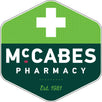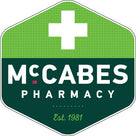Face masks for skin redness
Skin can turn red for a number of reasons, some more serious than others. But in all cases, a proper skincare routine—including face masks—can make a massive difference in reducing any unwanted flare-ups.
On this page, we look at some of the common causes of skin redness and tell you why using face masks as part of your weekly cleansing regime can really help.
Click on a link to jump to that section:
What causes redness in the face?
When your face turns red, it’s because your blood vessels have dilated (widened). When they expand in this way, they quickly fill with blood, giving your skin its red appearance.
This can happen for a number of reasons. Some people suffer redness because of skin conditions such as rosacea or acne. For others, it might be due to an allergic reaction, or flushing because of heat or anxiety, for example.
We cover some of these causes in more detail below.
Rosacea
Facial redness is one of the main symptoms of rosacea, a chronic skin condition that affects many millions of people worldwide. Most sufferers experience a persistent, long-term redness of the cheeks, forehead, chin and nose caused by dilated blood vessels.
Other common symptoms of rosacea include:
- Flushing
- Uneven skin
- Small papules (bumps) and pustules (pus-filled spots) forming
- Thickened skin—usually around the nose
- Dry and/or sensitive skin
- Inflammation (swelling)
What exactly causes rosacea is still to be determined. Some factors that are thought (but not proven) to cause it include:
- Abnormalities in the blood vessels of the face—possibly caused by sun damage
- Skin peptides—molecules in the skin that can be activated by certain triggers (see below), resulting in dilated blood vessels, redness and inflammation
- Genetics—it’s possible the condition could be passed down through families, although there’s no clear evidence for this
There are several “triggers” that, while not considered direct causes, are known to worsen the symptoms. These include:
- Hot, humid, cold or windy weather
- Exposure to sunlight
- Stress
- Exercise
- Alcohol
- Caffeine
- Spicy foods
- Hot drinks
Acne
If you suffer with acne, you’ll know that picking at the blemishes on your skin can leave red or purple inflamed marks (essentially scars) that may take weeks to subside.
The swelling is part of your body’s natural healing process. However, allowed to persist for long periods, it can cause something known as post-inflammatory hyperpigmentation. This is where the blood vessels dilate and the skin reddens as a result of the continuing inflammation.
Allergic reaction or irritation (contact dermatitis)
It’s quite common for people to suffer irritation or an allergic reaction as a result of something coming into contact with the skin on their face. This condition is known as contact dermatitis, and appears as a red rash.
Irritant contact dermatitis is when your skin is irritated by something that touches it (for example, soap or a beauty product). Allergic contact dermatitis is when whatever comes into contact with your skin provokes an allergic reaction (for example, poison ivy, perfume or latex).
Some acne treatments contain ingredients—such as salicylic acid or benzoyl peroxide—that can have this kind of effect.
Flushing
Skin flushes when the blood vessels just beneath its surface dilate and fill with blood. It can be more prominent in areas of the body where these blood vessels are closest to the skin, such as the face (especially the cheeks).
Flushed skin is usually not a cause for concern and will die down after a short time. However, in some cases, it can be due to an underlying medical condition, such as exhaustion or heat-related illnesses like heat exhaustion or heatstroke. This is when it’s important to seek medical treatment.
Embarrassment or anxiety
You might flush—or blush—when you’re embarrassed or anxious. These feelings prompt your body to release hormones (such as adrenaline) that widen the blood vessels and cause a particularly red skin tone. Other times, it might be as a result of drinking alcohol, which raises your blood pressure and expands the blood vessels.
Medication
Some medication can cause the skin to flush. The most common types that do this are:
- Nicotinic acid (niacin)
- Vasodilators
- Calcium channel blockers
- Anti-inflammatories
- Beta blockers
- Angiotensin-converting enzyme (ACE) inhibitors
If you experience flushing of the skin after recently starting one of these medications, you should speak to your doctor.
Heat
Feeling hot—whether because of the climate or engaging in strenuous physical activity, for example—can also cause your skin to flush. In this case, the blood vessels are dilating to cool your body down. Again, as this happens, blood flows into them, making the skin red.
How is skin redness treated?
The cause of your skin redness will determine how you go about treating it. If it’s due to a skin condition like rosacea (for which there’s no cure) or acne, you might need to follow the advice of a dermatologist and take prescribed medication.
However, with most cases of redness—whatever the cause—part of the recommended advice will be to:
- Avoid anything that might trigger and aggravate the symptoms
- Take good care of your skin by keeping it clean and hydrated
How do face masks reduce redness?
The key to proper skincare is to follow a face-cleansing regime that includes:
- Cleansing
- Exfoliating
- Applying a face mask
We explain these steps in more detail below.
Skincare to help reduce redness
First, there are various types of skincare products you might want to avoid, as they can irritate your skin rather than soothe it and lessen any redness. These include:
- Products containing alcohol (e.g. astringents, toners and clarifying lotions)
- Products containing fragrant plant oils or extracts (e.g. lavender, lemon, peppermint, eucalyptus, rose or witch hazel)
- Products with synthetic fragrances
Instead, use products that are light, cooling and intended to calm and soothe sensitive, inflamed skin.
5-step anti-redness routine
Incorporate the following steps into your cleansing routine:
- Wash your face
Do this once in the morning and again at night, with a water-soluble, oil-free cleanser applied to a clean facecloth or cotton pad.
- Apply toner
Toners are great for skin. Not only do they remove excess oil, but they help restore the skin’s pH balance while purifying, moisturising and refreshing.
Apply morning and night after washing, or once a day or every other day if you have particularly irritated skin.
- Exfoliate
This means using an exfoliant to remove layers of dead skin cells to reveal the new, healthy cells underneath. However, it also helps soothe red, irritated areas of skin and achieve smooth, soft and supple skin.
You should do this two or three times a week. Don’t scrub your face too forcefully as this can cause the skin to become irritated or swollen.
- Apply serum and moisturiser
Face serums do the preparation work, allowing the active ingredients in your moisturiser to penetrate more deeply and hydrate the skin. Moisturising is all about hydration—getting more moisture into your skin and stopping it from drying out. You should apply serum and moisturiser twice a day.
- Apply a face mask
Putting on a face mask once every week will not only cleanse your skin of bacteria, impurities and excess oil but help reduce redness and swelling, particularly if the skin is especially sensitive. You might use a mask that washes off, or a peel-off mask.
Clay face masks are particularly effective—see the products in McCabes’ range below.
Face masks to reduce redness—our recommended products
McCabes’ range of face masks contain a variety of ingredients that are kind to skin. To reduce skin redness and relieve swelling, look for face masks that contain ingredients such as:
- Clay (including volcanic clay, smectite, bentonite or kaolin)
- Salicylic acid (also known as beta hydroxy acid, or BHA)
- Aloe vera
- Chamomile
McCabes’ best anti-redness face masks
 |
 |
 |
|
Oh K! Cucumber Sheet Mask
|
The Inkey List Kaolin Clay Mask 50ml
|
Vichy Normaderm 3-in-1 Cleansing + Scrub + Mask 125ml
|
|
Price: €6.50 |
Price: €6.99 |
Price: €14.00 |
 |
 |
|
|
Aloe Pura Aloe Vera Face Mask 150ml
|
Vichy Quenching Mineral Mask 75ml
|
|
|
Price: €6.50 |
Price: €18.00 |

Oh K! Cucumber Sheet Mask
- Hydrating face mask that helps calm and soothe the skin
- Rich in naturally soothing cucumber, chamomile and aloe vera extracts
- Good for dry, dehydrated or stressed skin
Price: €6.50

The Inkey List Kaolin Clay Mask 50ml
- Kaolin and smectite clay to remove impurities and unclog pores
- Non-drying
- Suitable for all skin types
- Paraben-free, fragrance-free and cruelty-free
Price: €7.50

Vichy Normaderm 3-in-1 Cleansing + Scrub + Mask 125ml
- Suitable for sensitive skin
- Contains no parabens
- Contains no alcohol
- Unclogs pores
- No soap
Price: €16.15

Aloe Pura Aloe Vera Face Mask 150ml
- Skin feels softer and more hydrated
- Results in just 5 minutes
- Mineralising thermal Water leaves the skin feeling invigorated
- 100% hypoallergenic—tested on sensitive skin
Price: €9.35

Vichy Quenching Mineral Mask 75ml
- Relieves dryness
- Soothes and cools the skin
- Enriched with vitamin B3
- Enriched with Vichy mineralising thermal water
- Gently fragranced
- Paraben-free
Price: €19.00

